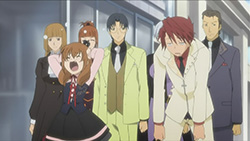 |
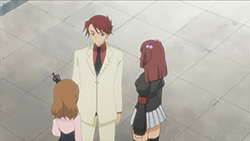 |
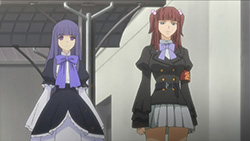 |
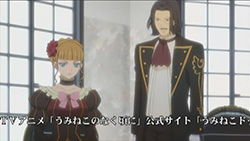 |
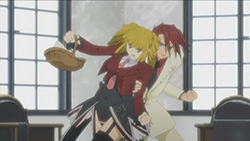 |
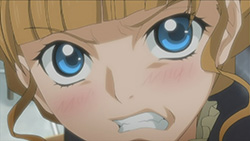 |
 |
 |
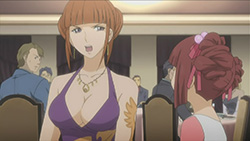 |
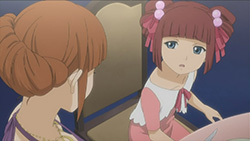 |
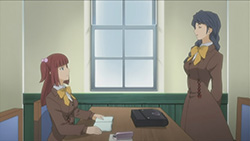 |
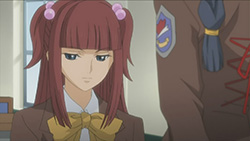 |
 |
 |
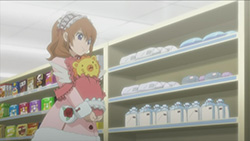 |
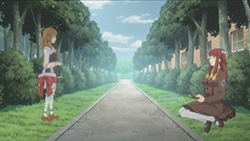 |
 |
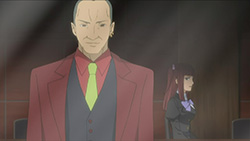 |
 |
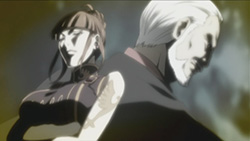 |
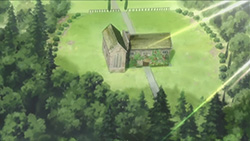 |
 |
 |
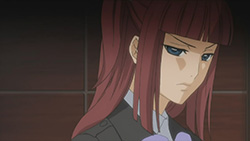 |
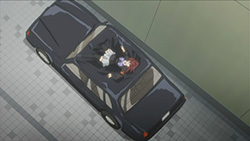 |
 |
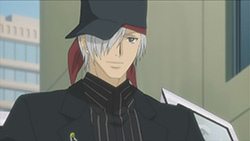 |
 |
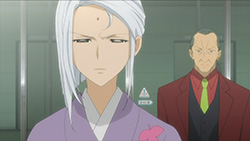 |
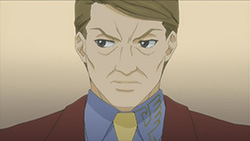 |
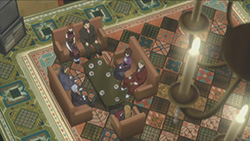 |
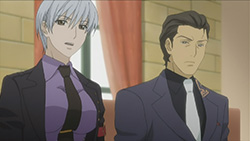 |
 |
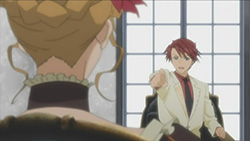 |
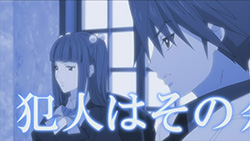 |
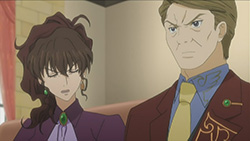 |
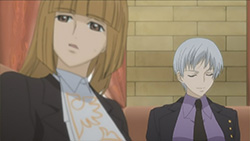 |
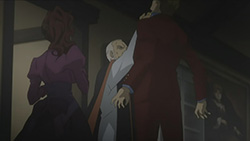 |
 |
「VI-I end game」
The playing field has been wiped clean, the pieces reset. After Beatrice’s conniving attempt to win last time, it’s clear she shouldn’t be taken lightly. The stakes have been increased now that the vicious 12 year cycle is known, but Battler has Ange’s help for this fourth game. Beatrice also arrogantly grants him the use of the “blue truth”, which may just come back to bite her in the ass.
In my previous post, I mentioned how Umineko’s approach on the whole murder mystery theme didn’t appeal to me for most of the first three arcs. The main reason for this was because it wasn’t evident exactly what was on the line. Sure the Ushiromiyas’ lives were, but after magic entered the picture, things quickly became a Beatrice-run show. While Battler struggled his way through the first three endeavors, it never felt like he ever had a chance. It seemed like Beatrice was just toying with him and there was nothing to do but watch how everyone dies again. Because of that, all of the locked door murder mysteries, Schrödinger’s Cat paradoxes, and logical counter arguments were heavily overshadowed. It’s not that I couldn’t appreciate the complexity of some of them; it’s just that Beatrice’s insurmountable, dominating presence in the game made it all feel pretty moot. This is partially due to the introduction of her “red truth”, which could instantly shatter Battler’s theories and throw him in disarray. I don’t know about you, but I was betting on Beatrice every time.
Until now that is. With the introduction of Ange and the revelation of the 12 year endless hell, the stakes have been put into perspective along with hope to pull through. The motifs that this series emphasizes can no longer be perceived as one-sided; there’s every reason to believe that Beatrice can be beaten at her own game. We know what’s on the line, we believe Battler can win, and we’re starting anew. Now this is exciting. While I’m fully aware that I probably wouldn’t be feeling this way without all the previous build-up, I wanted to reiterate why I hadn’t been enthralled by Umineko up to this point. I made the comparison to Higurashi not because I wanted to see the same thing, but because it exemplified how the recurring nightmare approach can pull viewers in right away. There, the murders were shrouded in complete mystery, leaving you with the impression that anything could happen next. Plus, they had the whole Oyashiro curse thing going on, along with the constant horror stories to keep you in suspense. As such, things were really entertaining right from the get-go, whereas Umineko needed more arcs to really draw me in. It was a retrospective look on things, seeing where we are now with the story.
With the game reset and Ange in the planar world with Battler (under the alias “Gretel”), we’re first given a look at the outcome of Rokkenjima that she knows. While Beatrice and Battler are still going at it in yet another game, Eva came out as the sole survivor as far as Ange’s concerned. Having lost her immediate family — Rudolf, Kyrie, Battler — in the incident, Ange is taken in by Eva and educated to become the next Ushiromiya heir. She enters a difficult stage in her life, where she’s despised by others at school for “snatching” the inheritence rights from more befitting candidates, despite having no involvement with Rokkenjima. Ange’s able to get through her days with the help of a diary left behind by her “older” cousin Maria, whom she’s able to talk to because she also possesses magical powers. However, she’s more concerned about finding out what really happened on October 4th, 1986.
Seeing as Eva was found 2km away from the mansion on a stormy night, Ange naturally suspects that she killed everyone to claim the head of the family and the inheritence. A family friend and company president, Tetsuru Okonogi (Kosugi Juurota, Okonogi in Higurashi), highly doubts that though because of Eva’s genuine remorse over the deaths of Hideyoshi and George. Instead, he conjects the possiblity that Kinzou had everyone try to solve the epitaph to decide his successor, but was actually using it as a ploy to give it to Eva since he thought she was qualified. And while everyone was being killed off in accordance to the epitaph, he had Eva hide in the secret safe house Kuwadorian that only the head of the family knows about. Back to Ange’s tough life, she also has to put up with her other aunt Sumadera Kasumi‘s forceful ways, but has a bodyguard named Amakusa Juuza (Yusa Kouji) on her side thanks to Okonogi. (Kasumi is Kyrie’s younger sister and also voiced by Tanaka Atsuko.)
As for the current game in play, the family is once again restless about Krauss and Natsuhi’s refusal to let them meet with Kinzou. To circumvent the issue, Kyrie proposes that they won’t ever ask to meet with Kinzou until he passes away, provided that Krauss upholds his responsibilities as his representative. Failure to do so means he has to revoke his rights to the inheritence, which includes allowing Kinzou to die from anything but a natural death. Since everyone’s been kept in the dark regarding the inheritence details, Krauss quickly catches on to this as Kyrie’s way of suggesting that Kinzou’s already dead and that he killed him to claim the inheritence all for himself. Hearing this possibility, Battler quickly challenges Beatrice to try repeating in red that Kinzou is among the 18 people on the island, implying that there’s someone else he’s never accounted for. She refuses though, having grown tired of giving him that card to play. Ange soon points out that Battler implicitly accepted Beatrice’s rules by using the red truth, which is why she’s so annoyed with his previous attempts at this stupid, unfair game.
Taking offense, Beatrice offers Battler the use of blue text instead, which he can use to theorize as long as the theory outright denies the existence of witches. While Battler’s confused about its usefulness, Ange suggests that he change his gameplan from a careful dissection of the mystery to a head-on one and bombard Beatrice with so many possible truths that she won’t be able to refute them all. Rejuvenized by this “shotgun approach”, Battler starts off by saying in blue that Kinzou is not among the 18 people on the island. Back on Rokkenjima, we continue to follow a perspective where Kinzou is alive. He’s pissed that the others forced Krauss into a corner though, and says he’ll attend the family meeting to settle everything personally.
The introduction of the blue text is huge, because it allows Battler to impose numerous possible truths on Beatrice, which she has to somehow counter. Her trump card of course is her red text, provided that she can actually say what she needs to. Thus, we have our battle of roundabout arguments, where you win if the other person can’t disprove what you’re suggesting. The rules are that Beatrice can’t acknowledge the existence of witches with her words since she can only speak the truth, and Battler can only deny their existence with his words within the confines of those truths. Now with the tool he’s been lacking to fight evenly, Battler can win the game by cornering Beatrice with enough blue explanations, whereas she needs to exhaust his imagination in order to win. It doesn’t even matter which of Battler’s theories is correct — he simply needs to show that one’s possible and place doubt on Beatrice’s explanation with witches. With Schrödinger’s cat in full effect, witches currently exist and don’t exist in the Rokkenjima “system”. It’s a courtroom battle of his truths versus hers! Who will come out on top?
* The opening sequence is back to a final portrait of Beatrice and not Eva-Beatrice.

damn!!…cant wait to see the ep…..
Getting Good Looks like i will be watching this series afterall!
YESSSHHHH!!! This has become even MORE delicious! Want the episode naow!
more expy characters? Okonogi!
“Now with the tool he’s been lacking to fight evenly, Battler can win the game by cornering Beatrice with enough blue explanations, whereas she needs to exhaust his imagination in order to win”
come to think of it, battler was suckered all along by relying on the red text. if the red text limited battler’s choices, the blue text definitely gave battler unlimited ones. however, i think the reason why beato would give such advantage to battler wasn’t because she wanted to fight fairly. it’s so that beato could harvest a better reward. if beato manages to crush every hope/possibility that battler uses with just a single red statement, wouldn’t it be more rewarding? more so if battler actually admits the existence of witches despite all his numerous theories.
baka~:
I agree, hence why my opening paragraph mentions Beatrice’s arrogance and how it might bring about her own loss.
Actually, the opening now shows all 3 portraits.
There’s also 2 more changes. Can you spot them? =D
Yeah, I spotted that, but was referring to the final portrait that shows up with the title. There were a few differences leading up to that, but I didn’t notice any changes afterward. Are they something really subtle?
Sadly, I didn’t even notice the opening was changing for the longest time before, mainly because I was skipping over it. -_-;
@divine:
well, i don’t really care whoever wins in the end so long as i get to hear more of beato’s deranged laughter. if there’s one thing that amuses me in this anime, despite the absurd battle of wits, it’s sayaka ohara’s insane laughter X3
I don’t care that hipocrit old-lady Beatrice … Ange, Battler and Kinzo(the best grandfather of the world) made the episode
@divine
If you rewatch the opening, look carefully at Maria’s outfit when they show her standing alone. That’s one of the changes Serpit was talking about, I believe. 🙂
@Serpit:
Show Spoiler ▼
Ah, Show Spoiler ▼
Thanks! =)
Battler has leveled up! Learned Talk in Blue!
Let the battle of the intellects commence!
ooooh.. I though this isn’t going to blogged here. Anyway… I’m glad the deserved quality is now being given now that it’s on the last parts of the series. Less derpy characters!
Okonogi surprised me… I wonder if he’s related/same to the Okonogi on Higurashi.
Please after the red text, wich was ludicrous enough itself, we have the blue text. And a couple more chars. This serie continues going on throwing in decoy elements and leaving unrevealed what really matters. I hope the final revelation where the truth will be taken out of the blue (litterally) will be satifying enough to avoid some big LOL, such as the nice act Beatrice set up last arc and nobody believed unless Battler.
Nice seiyuu shout-out with the winged backpack, Maria. xD
“Please after the red text, wich was ludicrous enough itself”
I’m pretty sure that the authors are drawing an analogy between Beatrice and Jesus; this is where the red text came from (many versions of the Bible have the words of Jesus in red). I had suspected this connection for some time, and when she used red text the very first time I considered it to pretty much be the final confirmation of my suspicions.
And I must say, their rendition of “taking away the sins of the world” is quite novel/interesting.
However, I’m less clear on where the blue text idea came from.
I don’t think this show has anything to do with religion.
Closest thing I see to that is that as long as a character in the Umineko ‘believes’ in magic, it will exist. I felt it was Battler’s role to solve the island mystery and consequently, deny the existence of magic (at least in their little murder story).
@megalith He’s got pointy ears and has the same seiyuu as the Higurashi Okonogi, so it’s VERY possible. Though I thought Tokyo would’ve had him put down for being so easily bribed by the resident psycho-nurse-lady. I guess he survived thanks to slow bureaucracy.
I can’t help but feel that Beatrice is actually on Battler’s side and is doing all the psycho stuff she’s been doing till now only because she needs an evil facade for Lambda to believe that Beatrice is trying to win, when she’s really discretely stalling (by repeating the game over-and-over) long enough for Battler to assemble all his resources (e.g. Ange) to finally win the game.
I would’ve liked to have seen Satoko or one of the Sonozaki twins instead of, of ALL characters, Okonogi. They’d be mighty fine by this time right? We’ve already seen an adult (though depressing) Rena back in Higurashi and a sort of grown up Rika (as Berkn–like I could bother remembering how to spell this). Hope they make at least ONE cameo.
they skimped on sakutaro’s theme.
@Julian: Don’t expect it. This Okonogi is probably not even the same Okonogi from Higurashi. And if you really want the Higurashi characters to show up that badly, because the giant slew of characters so far isn’t doing it for you, then just watch Higurashi again.
And I think what you said about Beato’s battle being one-sided is true. One-sided for her.
Battler has to prove magic can’t be the culprit, even in the slightest way.
Beato has to prove magic is the culprit, which is impossible to do.
Beato never had a chance of winning from the start, especially with the introduction of red text.
if anyone noticed
there are 3(three) siesta sisters shown in the OP
and maria was holding eva-beatrice’s staff
a possibility that she could turn into another ‘beatrice’ in the future
“and maria was holding eva-beatrice’s staff
a possibility that she could turn into another ‘beatrice’ in the future”
Show Spoiler ▼
Yeah, Ungas, I completely missed the 3rd siesta sister until a friend pointed it out. With all the op changes in chapter 3, I’m surprised we only got subtle ones for the final chapter of the anime.
@Julian
Prolly.. 🙂
@Marion
Well it’s kinda puzzling, why bring up Okonogi into this series. I see no sense to remind us of Okonogi unless it’s one of Ryukishi07 favorite characters. I mean he’s not even one of the head honcho on Hinamizawa incident. XD
Oh yeah.. I forgot to add. It makes me wanna rewatch ep 2. I forgot how Kinzo died. It does raise an interesting question that Kinzo could’ve been dead for all this time.
If I remember correctly ep 1 and 3 he was burnt. ep 2 they didn’t show so that means so I’m thinking he went missing. Ohhh.. Now I’m pumped up!!! This is by far the most interesting ep in Umineko. XD
Did you guys notice in the OP that Maria is dressed like Beatrice? She’s even holding a staff!
Haha nice job on spotting the new differences. I was looking out for new stuff in the opening but didnt managed to catch all of them! Thanks for the juicy info haha. Makes me look forward to how things are going to progress!
J.O. (Quantam): I’m pretty sure that the authors are drawing an analogy between Beatrice and Jesus
Oh my LOL!
AFAIK bernkastel is rika furude
watch the final ep in the second season of higurashi near the end. you’ll see bernkastel talking to the loli miyo
she is called the witch of miracles in umineko, where in higurashi she was wishing for a miracle to happen – which happened in matsuribayashi-hen arc
She is not Rika Furude.
Also, supposedly on the character designers blog, if DVD sales don’t improve, they won’t even bother animating umineko no naku koro ni chiru.